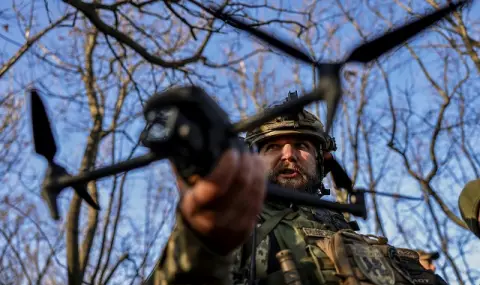Ukraine is working on improving the parent technology of UAVs to turn them into real flying aircraft carriers, Forbes writes.
The first mentions of Ukrainian drones carrying smaller drones appeared back in November 2023. Now the Russians complain that Ukrainian FPV drones attack targets up to 40 km behind the front line or even further. This is too much for FPV drones and therefore a sign of the use of flying aircraft carriers to reach their target in the Russian rear.
Forbes compares the technology of Ukrainian drones to the way China began to create naval aircraft carriers. Beijing launched its first ship of this class - Liaoning - back in 2012, but it took another four years of testing and training before the ship was declared combat-ready.
The same thing happens with drone mothers in Ukraine. Using an FPV drone is relatively easy – all you need is the drone itself and an operator. But when you have a large drone carrying several small drones on it behind enemy lines, where each of these smaller drones will have to hit a separate target, it requires both more sophisticated equipment and closer interaction between a whole team of specialists, including several UAV operators.
Earlier, Ukraine has already shown several different designs of drones - both fixed-wing and multi-propeller. At the same time, they can carry a different number of FPV drones – one, two, four or six. Due to the technical complexity of the coordinated control of multiple drones that receive a relayed signal from the mother drone, in practice the best option may be to combine a reusable mother drone with a single kamikaze drone. This is exactly how the technology in the "Birds of the Magyar" unit is being developed, for example.
The choice between a fixed-wing or propeller-driven design also involves compromises. Propeller-driven drones usually fly quite low (300-400 meters), where they are vulnerable to attack by various means, including small arms fire and electronic warfare weapons. On the other hand, fixed-wing drones, like an airplane, can rise to considerable heights, where they become inaccessible to many means of attack. But there they are clearly visible to enemy radars, which in turn makes them easier targets for anti-aircraft systems.
In addition to strike missions, drones are also used for defensive tasks. In particular, they act as a flying launch pad for FPV interceptors that hunt enemy drones. So a large drone on an aircraft carrier can patrol the sky at high altitude, and the FPVs it carries are launched only when an enemy drone appears nearby.
"These are very early days for drone carriers. In the future, we may see motherships carrying a mixed load of reconnaissance and strike drones," Forbes writes.
New equipment of the Ukrainian army
UNIAN reported earlier that the armed forces of Ukraine have recently begun using Japanese Morooka PC-065B engineering vehicles at the front. These vehicles do not have armor or weapons, but they play an important role on the front line, building bunkers and other fortifications that allow Ukrainian infantry to survive artillery and drone attacks.
According to the media, the Ukrainian army has received a new robotic complex. In fact, this is a wheeled robot that is capable of conducting reconnaissance, defense and assault operations, as it is armed with a machine gun.
Forbes: Ukrainian army creates combat fleet of flying aircraft carriers
The first mentions of Ukrainian drones carrying smaller drones appeared back in November 2023
Apr 9, 2025 21:52 156
